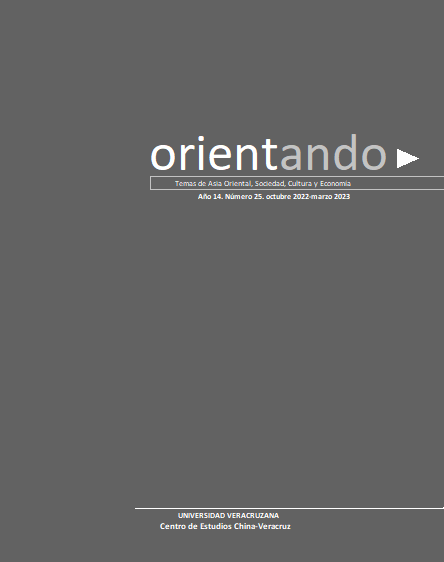Abstract
In this article we previously present the definition and characterization of the Chinese proverb to then address the problems posed by its translation into Spanish, exemplified in the case of the version made by Zhao Zhengjiang and José Antonio García Sánchez (2010) of one of the four most important classic novels of Chinese literature, Hóng lóu mèng (1791). The main objective is to reflect on the advantages and disadvantages of the strategies and procedures used to translate proverbs from Chinese to Spanish, we elaborated a corpus of 228 proverbs extracted from the novel, in order to find the most appropriate techniques for the phraseological translation between both languages. In short, the translation of proverbs is not a simple linguistic decoding, but also the translation of civilizations.
References
MUÑOZ, J. S. (1993). «Las paremias españolas: clasificación, definición y correspondencia francesa», Paremia, (2), 15-20.
CAI, Y. (2015). «La traducción del eufemismo del chino al español: Hongloumeng y su traducción Sueño en el Pabellón Rojo», Hikma, 14, 37-54.
FORGAS, E.(2018). «¿Hacia una teoría del refrán? (Un nuevo intento de indagación paremiológica)», Universitas Tarraconensis. Revista de Filología, 3: 49-64.
LYU, X. (2021a). La fraseología de la alimentación y la gastronomía en español: Léxico y contenido metafórico. Argus-a.
LUO, Y. (2018). «La metáfora EL SER HUMANO ES UNA PLANTA en Sueño en el Pabellón Rojo ([phrase omitted]) y su traducción al español: un análisis desde la perspectiva cognitiva», CÍRCULO de lingüística aplicada a la comunicación, (74), 105-133.

This work is licensed under a Creative Commons Attribution-NonCommercial-ShareAlike 4.0 International License.
Copyright (c) 2023 Orientando Temas de Asia Oriental, Sociedad, Cultura y Economía

